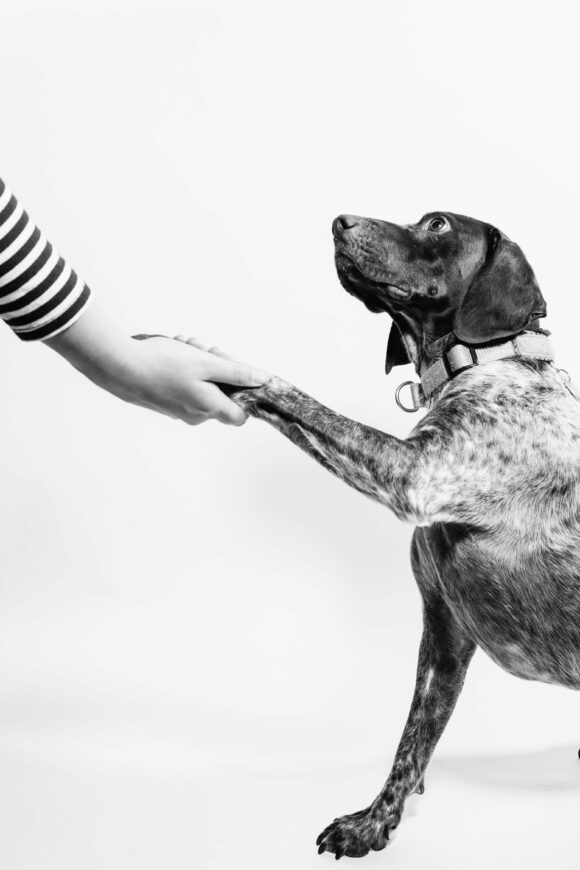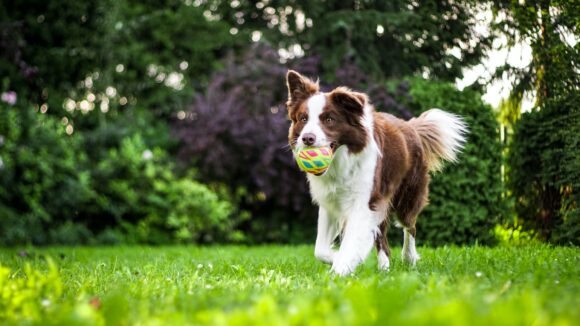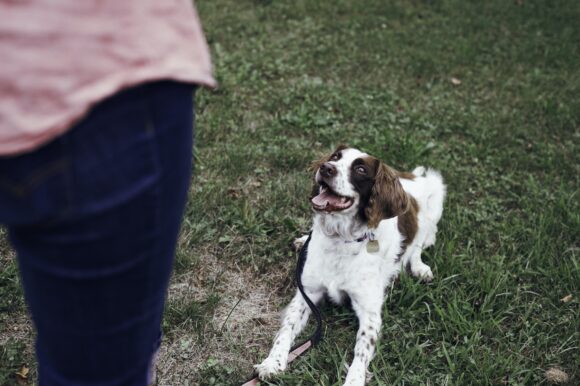Mastering Effective Obedience Training
In “Mastering Effective Obedience Training,” discover the key strategies and techniques to ensure your dog’s obedience training is successful. From establishing clear commands and consistent routines to using positive reinforcement, this article delves into the essential components needed to achieve effective obedience training. Whether you’re a first-time dog owner or looking to improve your training skills, this article provides valuable insights to help you master the art of obedience training for a well-behaved furry friend.

Understanding Obedience Training
Obedience training is a structured and systematic approach to teaching dogs essential commands and behaviors. It involves teaching dogs to respond promptly and reliably to commands such as sit, stay, come, and heel. Obedience training is not only about ensuring that your dog follows basic commands; it is also about fostering a strong bond between you and your furry friend through effective communication and leadership.
The importance of obedience training
Obedience training is crucial for the well-being and safety of both the dog and the owner. It provides dogs with mental stimulation, helps them understand boundaries, and prevents behavioral issues from developing. By establishing clear guidelines and expectations, obedience training promotes a harmonious and orderly household. Additionally, dogs who have received obedience training are more likely to be welcomed in public spaces, as their behavior is predictable and under control.
Benefits of obedience training
There are numerous benefits to obedience training that extend beyond basic command compliance. Engaging in obedience training helps promote positive behavior, build confidence, and reduce anxiety in dogs. It also enhances their ability to socialize with other dogs and people, ensuring they become well-adjusted and friendly members of the community. Obedience training can also be a fun and rewarding experience for both you and your dog, strengthening the bond between you as you work together towards a common goal.
Choosing the Right Training Methods
When it comes to obedience training, there are various methods and techniques to choose from. It is essential to select methods that align with your dog’s personality, learning style, and your training goals. Here are some popular training methods to consider:
Positive reinforcement
Positive reinforcement utilizes rewards, such as treats, praise, and affection, to encourage desired behaviors. By rewarding good behavior, you make it more likely that your dog will repeat the behavior in the future. Positive reinforcement is effective for creating a positive association with training and maintaining a happy and motivated dog.
Clicker training
Clicker training is a form of positive reinforcement that uses a clicking sound to mark desired behaviors. It helps dogs understand precisely when they have done something right and the exact behavior they are being rewarded for. Clicker training is a precise and effective method that can be used in combination with other training techniques.
Lure training
Lure training involves using a treat or a toy as a visual cue to guide the dog into performing a desired behavior. By luring the dog into the desired position, you can gradually fade out the lure and replace it with verbal cues or hand signals. Lure training is particularly useful for teaching commands like sit, lie down, and stay.
Electronic training devices
Electronic training devices, such as electronic collars, can be effective tools when used correctly and responsibly. These devices deliver mild stimulation, such as a vibration or a static signal, to provide immediate feedback and reinforce commands. It is crucial to seek professional guidance and use electronic training devices ethically and with care.
Balancing methods
Balancing methods combine positive reinforcement with mild corrections. These methods focus on creating a well-rounded training approach by using rewards for desired behaviors and, if necessary, applying corrections for unwanted behaviors. Balancing methods require a balanced and fair approach to training, ensuring that the dog understands the expectations while feeling respected and loved.

Establishing Leadership and Communication
To effectively train your dog, it is essential to establish yourself as a confident and competent leader. Dogs are pack animals with a strong instinctual need for a leader. By assuming the role of a leader, you provide your dog with guidance and structure. Here are some key aspects of establishing leadership and effective communication:
The role of a leader
Being a leader means setting clear expectations, providing guidance, and demonstrating consistency. Dogs look to their owners for guidance and seek someone they can trust and rely on. By assuming the role of a leader, you create a sense of security and encourage your dog to adhere to your commands willingly.
Effective communication techniques
Effective communication is the cornerstone of successful obedience training. Dogs primarily rely on verbal cues, hand signals, and body language to understand and interpret commands. It is crucial to be consistent in your cues and ensure they are clear, concise, and easily distinguishable from one another. Using a confident and authoritative tone of voice can also reinforce your commands.
Non-verbal cues and body language
Dogs are highly perceptive of human body language, and they use it to gauge our emotions and intentions. By maintaining calm and assertive body language, you can communicate confidence and control to your dog. Maintaining eye contact, presenting open and relaxed posture, and using appropriate hand gestures can significantly enhance your communication and reinforce your role as a leader.
Creating a Structured Training Routine
Establishing a structured training routine is vital for your dog’s progress and success in obedience training. A consistent and well-planned training routine helps dogs understand expectations and accelerates their learning process. Here are some key elements of creating a structured training routine:
Setting training goals
Before embarking on obedience training, it is essential to establish clear and realistic training goals. Determine what commands and behaviors you wish to teach your dog and outline the specific steps and milestones required to achieve those goals. Setting achievable goals will provide direction and motivation throughout the training process.
Developing a consistent schedule
Consistency is key when it comes to training dogs. Develop a regular training schedule that suits both you and your dog’s lifestyle. Consistency in training sessions helps build a routine and reinforces the commands and behaviors you teach. Plan for short and frequent training sessions to maintain engagement and prevent mental fatigue.
The importance of repetition
Repetition is crucial for solidifying learned behaviors and commands. Dogs, like humans, need time and practice to master new skills. Repeat commands consistently and reinforce them with rewards to ensure that your dog understands and responds reliably. Gradually increase the difficulty and distractions as your dog becomes proficient in each command.
Training in different environments
Training your dog in various environments helps generalize their learned behaviors and commands. Begin training in a controlled and familiar environment, gradually progressing to more challenging scenarios with distractions. By practicing commands in different locations, you teach your dog to respond regardless of the environment, making their obedience more reliable.

Teaching Basic Commands
Teaching basic commands lays the foundation for successful obedience training. Here are some essential commands to focus on:
Sit
“Sit” is one of the fundamental commands that every dog should learn. Start by holding a treat close to your dog’s nose and move it up, causing their head to follow the treat and their bottom to lower. Once they are in a sitting position, promptly offer the treat and praise your dog. Repeat this command and reward consistently until your dog sits reliably without the treat lure.
Stay
The “stay” command teaches your dog to remain in a specific position until given a release cue. Start by having your dog sit or lie down, then give the verbal command “stay” while extending your hand in a stop gesture. Gradually increase the duration and distance before releasing your dog with a release cue, such as “okay” or “free.” Consistency and patience are key when teaching the stay command.
Down
The “down” command teaches your dog to lie down and stay in that position until given further instructions. Start with your dog in the sit position and hold a treat close to their nose, gradually moving it downwards towards the floor. As your dog follows the treat, they will naturally lower their body into a lying position. Once in the down position, reward your dog with the treat and praise.
Come
The “come” command is crucial for ensuring your dog’s safety and enabling off-leash freedom. Begin indoors or in a securely enclosed area. Get down to your dog’s level and open your arms wide while enthusiastically calling their name followed by the command “come.” When your dog approaches you, reward them with praise and a treat. Gradually increase the distance between you and your dog, always rewarding their successful recall.
Leave it
The “leave it” command teaches your dog to ignore and abstain from picking up or interacting with specific objects. Start by placing a treat on the ground within your dog’s reach. As your dog tries to grab the treat, cover it with your hand and firmly say “leave it.” Wait for your dog to divert their attention away from the treat, then reward them with a different treat or praise. With consistent practice, your dog will learn to ignore items when given the “leave it” command.
Off
The “off” command is used to teach your dog to remove themselves from furniture, people, or objects. When your dog jumps on you or another person, gently but firmly say “off” as you guide them back to the ground. Once your dog has all four paws on the floor, reward them with praise and attention. Consistency is important in reinforcing the “off” command and preventing unwanted jumping behavior.
Heel
The “heel” command teaches your dog to walk calmly and closely by your side without pulling on the leash. Begin with your dog on a leash and hold it in your preferred hand. Start walking, reinforcing your dog for remaining by your side. Use verbal cues such as “heel” and gentle leash corrections to guide your dog when they start to pull or wander. Reward your dog when they maintain proper leash manners, gradually increasing the duration and distractions.
Troubleshooting Common Challenges
Obedience training may encounter common challenges along the way. Here are some strategies to address them:
Handling distractions
Distractions can hinder your dog’s focus and responsiveness to commands. Gradually introduce distractions during training sessions, starting with mild distractions and increasing the difficulty over time. Use high-value rewards and reinforce commands consistently to maintain your dog’s attention. Engaging in fun and engaging training games can also help keep your dog focused amid distractions.
Dealing with stubbornness
Some dogs may display stubborn behavior during training. If your dog refuses to respond to a command, avoid getting frustrated or resorting to punishment. Instead, reassess your training approach and consider adjusting your rewards or techniques. Break down commands into smaller steps and reinforce desired behaviors. Always prioritize positive reinforcement and patience when dealing with stubbornness.
Addressing fear and anxiety
Fear and anxiety can significantly impact a dog’s ability to learn and respond to training. If your dog shows signs of fear or anxiety during training, create a calm and safe training environment. Provide plenty of positive reinforcement and rewards to build their confidence. Slowly introduce triggers or situations that cause fear or anxiety, working at a pace that your dog is comfortable with. If necessary, seek professional assistance from a certified dog trainer or behaviorist.
Working with different breeds and temperaments
Different breeds and individual temperaments require tailored training approaches. Some breeds may respond better to specific techniques or require extra socialization. Consider the unique characteristics of your dog’s breed and temperament when selecting training methods. Be patient and adjust your training techniques as needed to accommodate your dog’s individual needs.
Building a Strong Bond with Your Dog
A strong bond between you and your dog is built on trust, respect, and positive reinforcement. Here are some techniques to strengthen your bond:
Building trust and respect
Trust and respect are the foundation of any successful relationship, including the one you have with your dog. Establish trust by being consistent, fair, and reliable in your actions and commands. Show respect by considering your dog’s needs and emotions, and always prioritize their well-being.
Rewarding good behavior
Rewarding good behavior is an essential aspect of building a strong bond with your dog. Use positive reinforcement techniques to acknowledge and reward desired behaviors. Treats, praise, and affection are effective rewards that reinforce your dog’s positive actions and strengthen the bond between you.
Avoiding punishment
Avoid using punishment as a training method. Punishment can damage your dog’s trust, increase fear, and lead to aggression or other behavior problems. Instead, focus on positive reinforcement, redirection, and clear communication to guide your dog towards desired behaviors.
Strengthening the human-dog relationship
Spend quality time with your dog outside of training sessions, engaging in activities that strengthen your bond. Play games together, go for walks, or cuddle on the couch. Regular physical and mental stimulation, along with positive interactions, will deepen the connection you have with your furry companion.
Consistency and Patience in Training
Consistency and patience are crucial throughout the obedience training process. Here’s why they are important:
Consistency in commands and rules
Consistency creates clarity and helps your dog understand what is expected of them. Use the same commands, cues, and rules consistently to reinforce behaviors. Consistency is particularly important if multiple family members are involved in your dog’s training and care. Ensure that everyone is on the same page and follows the established training guidelines.
Maintaining patience throughout the training process
Patience is essential during obedience training, as dogs require time to learn and adapt to new commands and behaviors. Avoid rushing or becoming frustrated if progress seems slow. Dogs pick up on your emotions, and your frustration may hinder their learning. Stay calm, positive, and patient, celebrating small victories along the way.
Understanding individual progress
Each dog learns at its pace, and progress will vary from one dog to another. Understand that some dogs may grasp commands quickly, while others may require more time and repetition. Tailor your training approach to suit your dog’s individual progress and needs. Celebrate every milestone, regardless of the pace, and adjust your expectations accordingly.
Advanced Training Techniques
Once your dog has mastered the basic commands, you can progress to advanced training techniques. Here are some options:
Taking training to the next level
Advanced training can include activities such as agility, rally obedience, or competitive obedience. These activities offer mental and physical challenges, further strengthening your dog’s skills and boosting their confidence. Joining advanced training classes or seeking guidance from professional trainers can be beneficial in this phase.
Training for specific tasks or sports
If you have specific goals in mind, such as therapy work, search and rescue, or competitive sports like flyball or dock diving, you can tailor your training towards those tasks. Seek specialized training resources and connect with experienced trainers who can guide you in training for these specific activities.
Teaching complex commands and tricks
Once your dog has mastered the basics, you can start teaching more complex commands and tricks. This can include advanced obedience commands, such as “roll over” or “play dead,” as well as fun and entertaining tricks like giving high-fives or fetching specific objects. Break down complex tasks into smaller steps and use positive reinforcement to achieve success.
Continued Training and Reinforcement
Obedience training is an ongoing process that requires consistent reinforcement and continued learning. Here’s why it is important:
The importance of ongoing training
Regular training sessions help maintain and reinforce the skills and behaviors your dog has learned. Ongoing training also provides mental stimulation, prevents regression, and reinforces the bond between you and your dog. Incorporate short and frequent training sessions into your routine, even after your dog has mastered the basics.
Refreshing and reinforcing previous commands
As time goes by, dogs might start to become less responsive to commands if they are not reinforced. Regularly review and refresh previously learned commands to ensure they remain reliable. This helps prevent your dog from developing bad habits or disregarding familiar commands.
Expanding on the training foundation
Continued training provides an opportunity to expand on the foundation you have established with basic obedience commands. Introduce new commands, refine existing ones, and focus on specific behaviors or skills you want your dog to excel in. Building upon the training foundation ensures that your dog continues to learn, grow, and thrive.
In conclusion, effective obedience training is a journey that requires patience, consistency, and understanding. By utilizing positive reinforcement, establishing clear communication, and setting a structured training routine, you can build a strong bond and teach your dog essential commands and behaviors. Remember that training is an ongoing process, and advanced techniques can be explored once the foundation is solid. With dedication and a friendly and patient approach, you and your furry friend can master effective obedience training.


